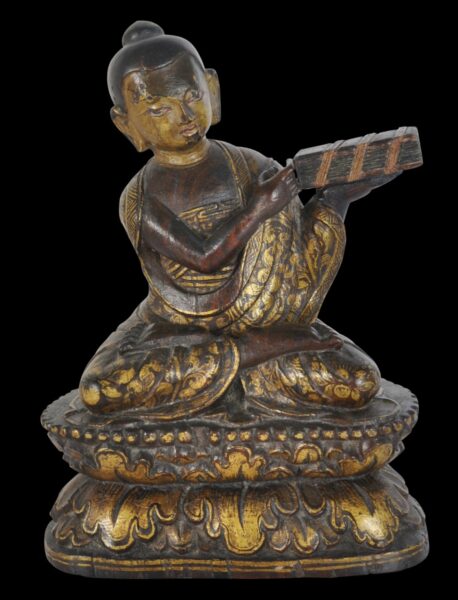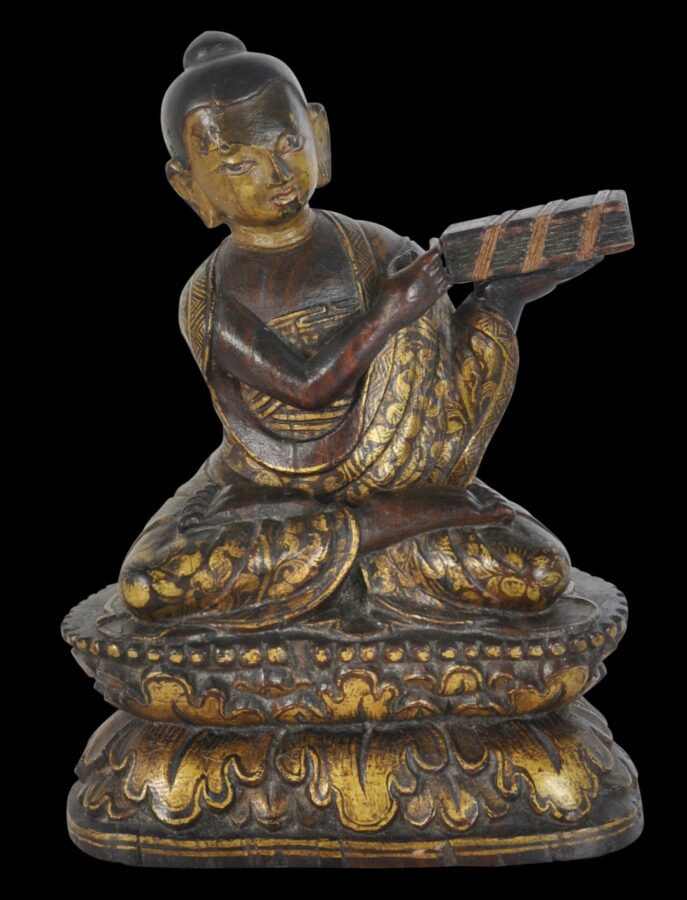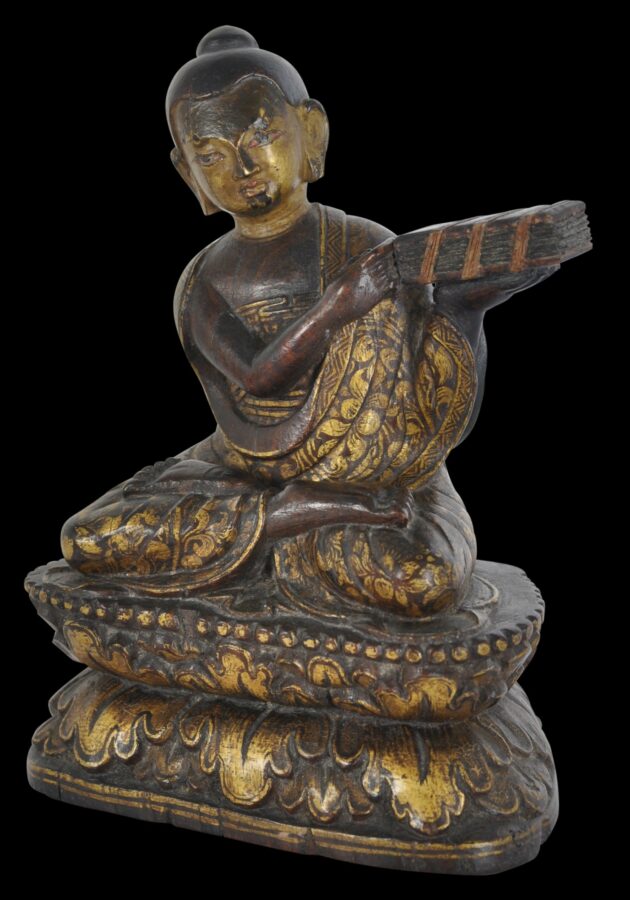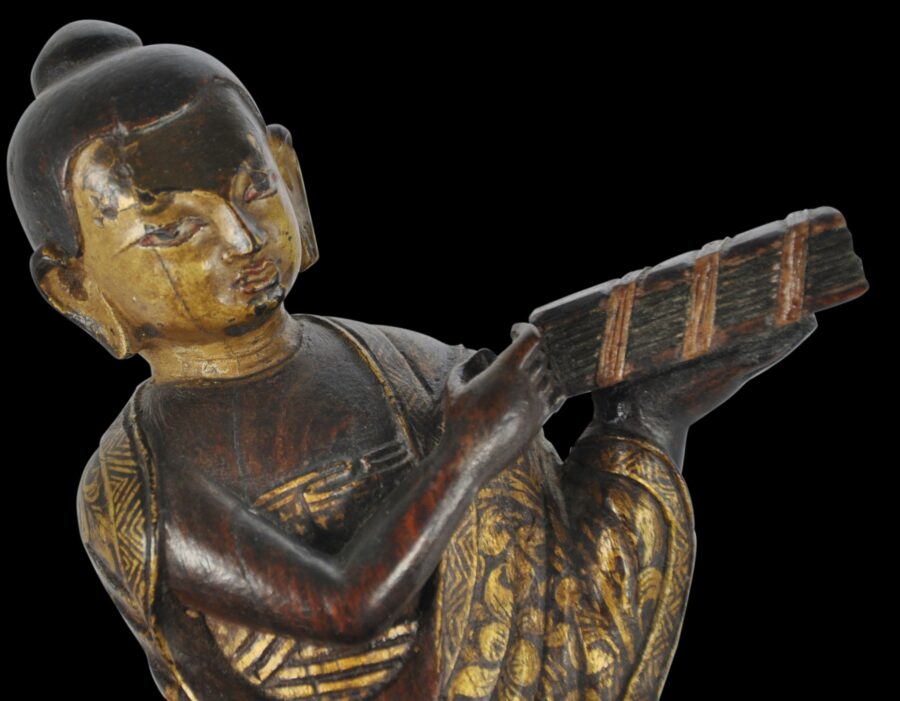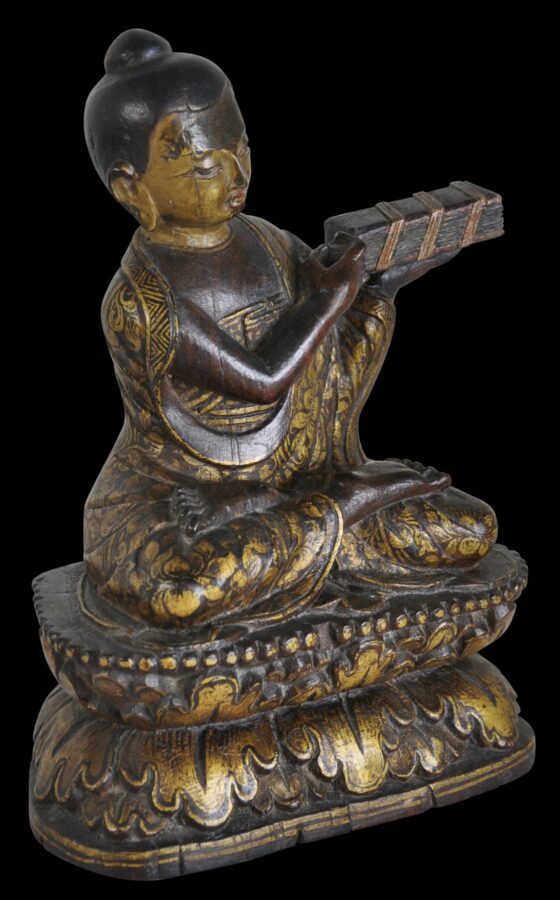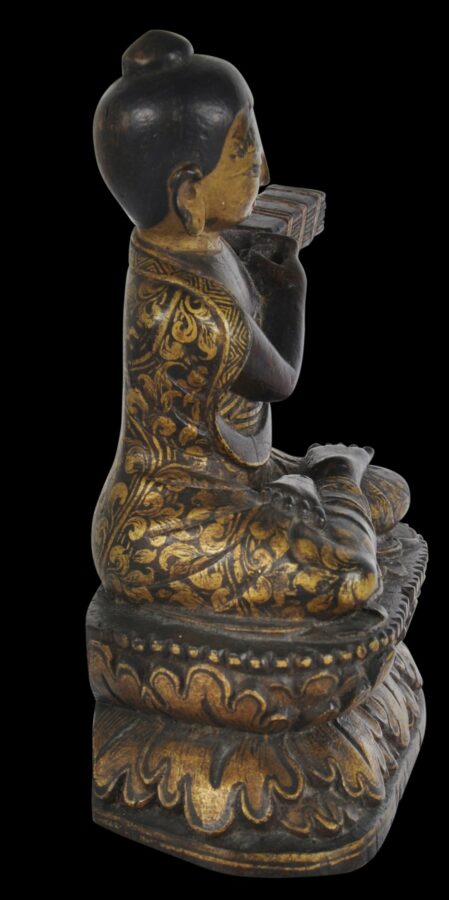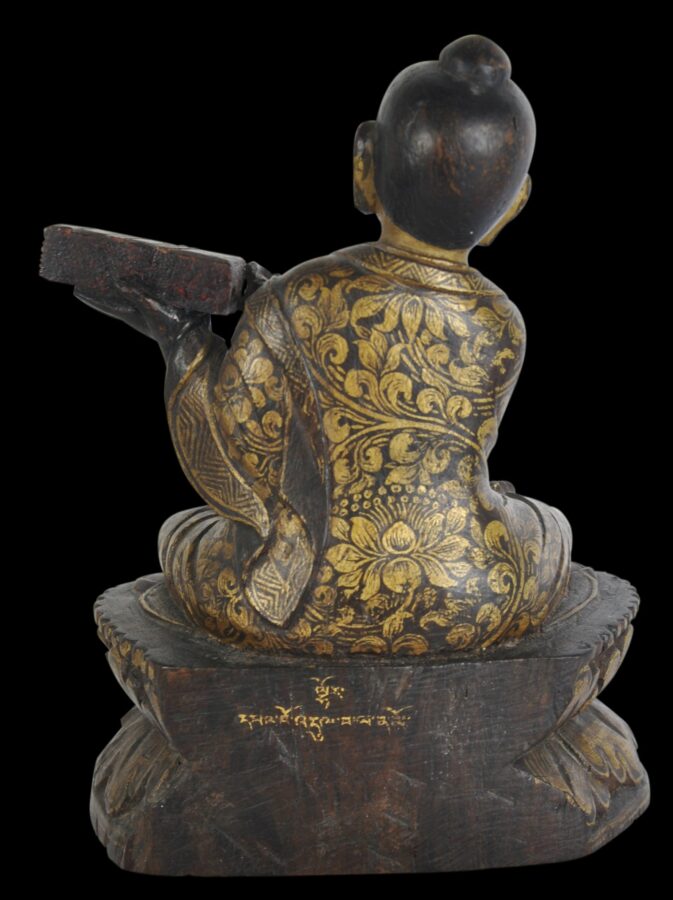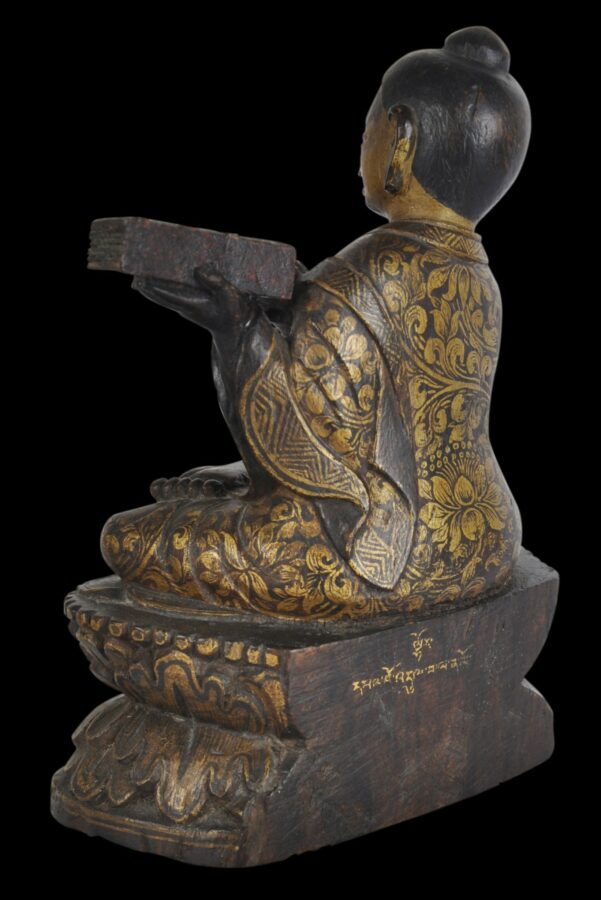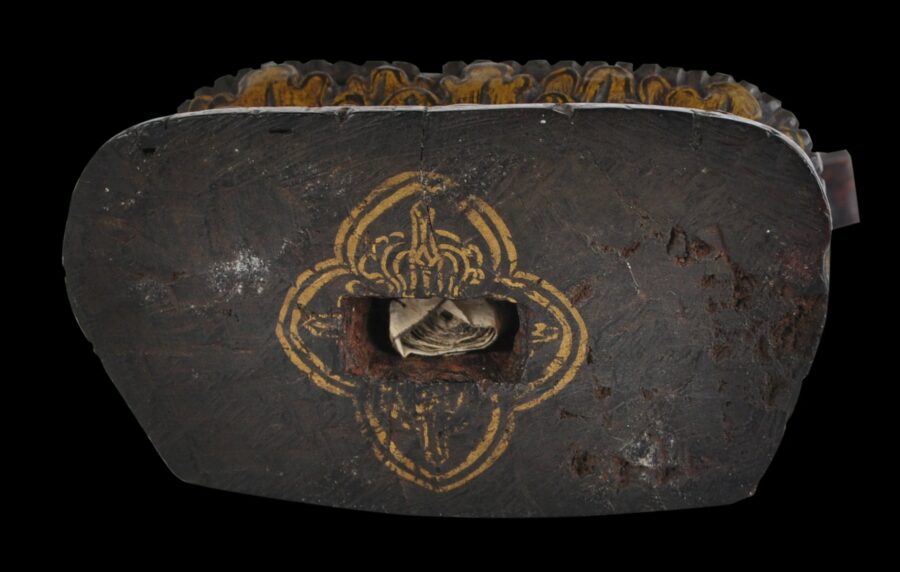This fine, rare image of a lama has been carved from Zitan wood and decorated with gold or gilt decoration. Most images from Tibet are made from bronze or other metal. Relatively few from carved wood were made and far fewer have survived.
The lama is seated in padmasana on a beaded, double-leafy throne, and holds aloft a sutra or pustaka manuscript with wooden covers and wrapped in a cord. The lama’s robes are beautifully decorated in gold leaf with floral motifs. The face, also gilded, has narrow, downcast eyes, a small mouth with pursed lips, thin, arched eyebrows, and closely cropped hair other than for a top knot. The extravagantly carved throne also has gold accents.
The quality of the carving is especially good and small details such as the folding over of the robe on the back to reveal the robe’s interior is well observed.
The image retains it original varnish or shellac covering.
The reverse has a small, elegant inscription in delicate lantsa script. The base is decorated in gold with a double vajra emblem around a cavity in which a prayer scroll has been inserted.
The image might be that of the arhat Gopaka who usually is depicted holding a manuscript, although usually the manuscript is held in front of his chest and thus his heart. (See a gilded bronze image of Gopaka here.) Another arhat typically shown with manuscripts is Dharmatala, although he is typically shown with sutras attached to his back. Arhats are personal disciples of the Buddha who have gained insight into the true nature of existence and have achieved Nirvana and thus are liberated from the endless cycle of rebirth. In Tibet, 18 arhats were recognised.
Tibetan images carved from wood are relatively rare. Zitan was often favoured on account of its hardness and durability. Zitan itself is now an extremely rare wood type which is indigenous to the Eastern Ghats of South India and was greatly favoured in China. Vast quantities were exported to China in the Ming and early Qing Dynasties where it was made into the highest quality furniture usually for the Imperial household. Smaller quantities were reserved for scholars’ items and fewer examples of Zitan sculpture are known still.
This image is particularly rare and fine.
References
Rijksmuseum Volkenkunde, Masterpieces of Rijksmuseum Volkenkunde, Leiden, 2013.
Spink, Light of Compassion, Buddhist Art from Nepal and Tibet, 1997.


